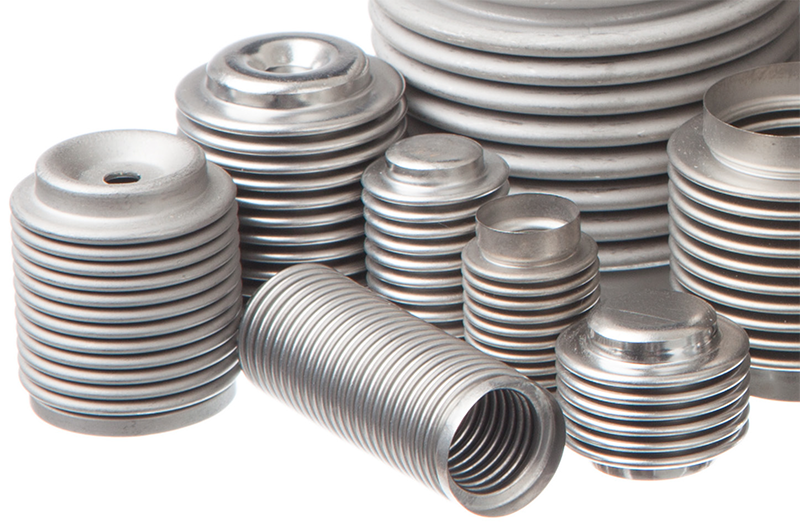Technology
News
Understanding Metal Bellows Manufacturing Methods
April 7, 2016You can’t begin to talk about metal bellows performance without considering manufacturing methods. All key performance parameters depend on the way the bellows is formed or welded. Let’s take a look at two of the most common manufacturing methods: seamless hydroformed bellows and seam-welded formed bellows.

Seamless hydroformed bellows. As their name suggests, seamless metal bellows have no welded joints. Instead, they’re produced in a multi-step deep drawing process. A secondary hydroforming step forms the convolutions. The deep drawing and hydroforming processes can hold consistent dimensional tolerances. For example, wall thickness variation from a well-controlled deep drawing process is within ± 0.0001 inches.
In high-volume applications requiring a small package size and a precise spring rate, seamless bellows are by far the most popular choice. These applications include many kinds of appliance, HVAC and industrial controls and sensors.
Seamless bellows do have some package size limitations. Their sweet spot for OD lies between 0.25 and 3 inches. Seamless bellows also have a higher initial tooling cost than seam-welded bellows. At production volumes, however, the tooling costs of bellows all but disappear.
Seam-welded formed bellows. Made from rolled, welded and formed sheet metal stock, seam-welding excels at producing large diameter bellows cost effectively. Diameters up to eight inches are not uncommon and would be cost prohibitive with seamless deep draw production methods. Seam-welded bellows can also be fabricated to any required length. And they have low initial tooling costs.
So seam-welded bellows are perfect for applications that need a large, cost-effective bellows, such as expansion joints or other connections that compensate for the movement of mating components.
Seam-welding bellows, however, do not lend themselves to applications that require a very precise spring rate. The reason is that their wall thickness tolerances are determined by the sheet metal stock, not the precision deep drawing process. Typical wall thickness variation for seam-welded models is ± 0.0005 inches, or about five times greater than a seamless bellows.
With wall thickness tolerances influencing spring rate and mean effective area, seam-welded bellows inherently have a less precise response to pressure and applied forces, which rules out many sensing and control applications.
[email protected] | 973-616-6900
2 North Corporate Drive, Riverdale, NJ 07457 | Sigma-Netics, Inc. © 2025


